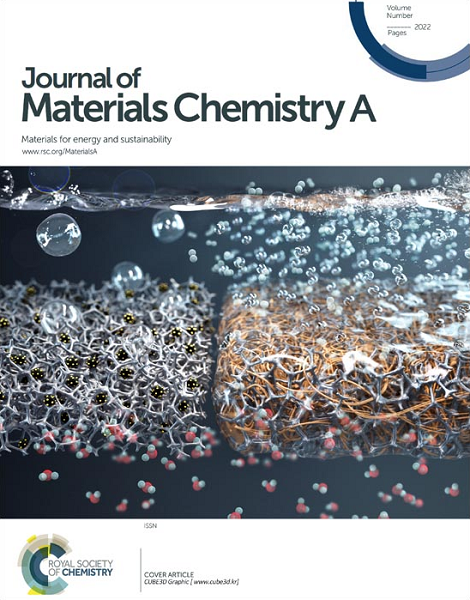Boosting stability and rate performance in sodium-ion batteries: first-principles insights into K+/NH4+ doped NaV3O8 cathodes
IF 10.7
2区 材料科学
Q1 CHEMISTRY, PHYSICAL
引用次数: 0
Abstract
Sodium vanadate (NaV3O8) has emerged as a promising and cost-effective cathode candidate for next-generation sodium-ion batteries (SIBs); however, its practical application is hindered by its structural instability and limited rate performance. Heterogeneous ion doping strategy has been proposed as a potential solution to these challenges, but the underlying reaction mechanisms and the specific effects of different dopants on NaV3O8 remain poorly understood. In this study, we systematically examined the effects of K+ and NH4+ ion doping on the structure, electronic properties, and electrochemical performance of NaV3O8 using first-principles calculations. We elucidated the energy storage mechanism of NaV3O8 through formation energy calculations and energy convex hull diagrams. Our findings reveal that doping with K+ and NH4+ significantly increases the initial discharge voltage, raising it from 2.75 V to 3.08 V. Additionally, this doping reduces the sodium ion diffusion energy barrier (from 0.53 eV to 0.25 eV), effectively alleviating volume changes in the electrode material during charge/discharge cycles and enhancing its cycling stability. Furthermore, crystal orbital Hamilton population (COHP) calculations indicated that K+ and NH4+ doping markedly improves the stability of the V–O bond, effectively inhibiting vanadium dissolution and further enhancing the practical performance of the electrode materials. These findings underscore the dual role of K+ and NH4+ dopants in optimizing both thermodynamic and kinetic properties of NaV3O8, offering practical design principles for high-performance, durable SIB cathodes.

提高钠离子电池的稳定性和速率性能:K+/NH4+掺杂的NaV3O8阴极的第一性原理见解
钒酸钠(NaV3O8)已成为下一代钠离子电池(sib)极具前景和成本效益的阴极候选材料;然而,其结构不稳定和有限速率性能阻碍了其实际应用。异质离子掺杂策略被认为是解决这些挑战的一个潜在的解决方案,但潜在的反应机制和不同掺杂剂对NaV3O8的具体影响尚不清楚。在本研究中,我们采用第一性原理计算方法系统地研究了K+和NH4+离子掺杂对NaV3O8结构、电子性能和电化学性能的影响。我们通过地层能量计算和能量凸壳图阐明了NaV3O8的蓄能机理。我们的研究结果表明,K+和NH4+的掺杂显著提高了初始放电电压,将其从2.75 V提高到3.08 V。此外,该掺杂降低了钠离子扩散能垒(从0.53 eV降至0.25 eV),有效缓解了电极材料在充放电循环过程中的体积变化,增强了其循环稳定性。此外,晶体轨道汉密尔顿族(COHP)计算表明,K+和NH4+的掺杂显著提高了V-O键的稳定性,有效抑制了钒的溶解,进一步提高了电极材料的实用性能。这些发现强调了K+和NH4+掺杂剂在优化NaV3O8热力学和动力学性能方面的双重作用,为高性能、耐用的SIB阴极提供了实用的设计原则。
本文章由计算机程序翻译,如有差异,请以英文原文为准。
求助全文
约1分钟内获得全文
求助全文
来源期刊

Journal of Materials Chemistry A
CHEMISTRY, PHYSICAL-ENERGY & FUELS
CiteScore
19.50
自引率
5.00%
发文量
1892
审稿时长
1.5 months
期刊介绍:
The Journal of Materials Chemistry A, B & C covers a wide range of high-quality studies in the field of materials chemistry, with each section focusing on specific applications of the materials studied. Journal of Materials Chemistry A emphasizes applications in energy and sustainability, including topics such as artificial photosynthesis, batteries, and fuel cells. Journal of Materials Chemistry B focuses on applications in biology and medicine, while Journal of Materials Chemistry C covers applications in optical, magnetic, and electronic devices. Example topic areas within the scope of Journal of Materials Chemistry A include catalysis, green/sustainable materials, sensors, and water treatment, among others.
 求助内容:
求助内容: 应助结果提醒方式:
应助结果提醒方式:


